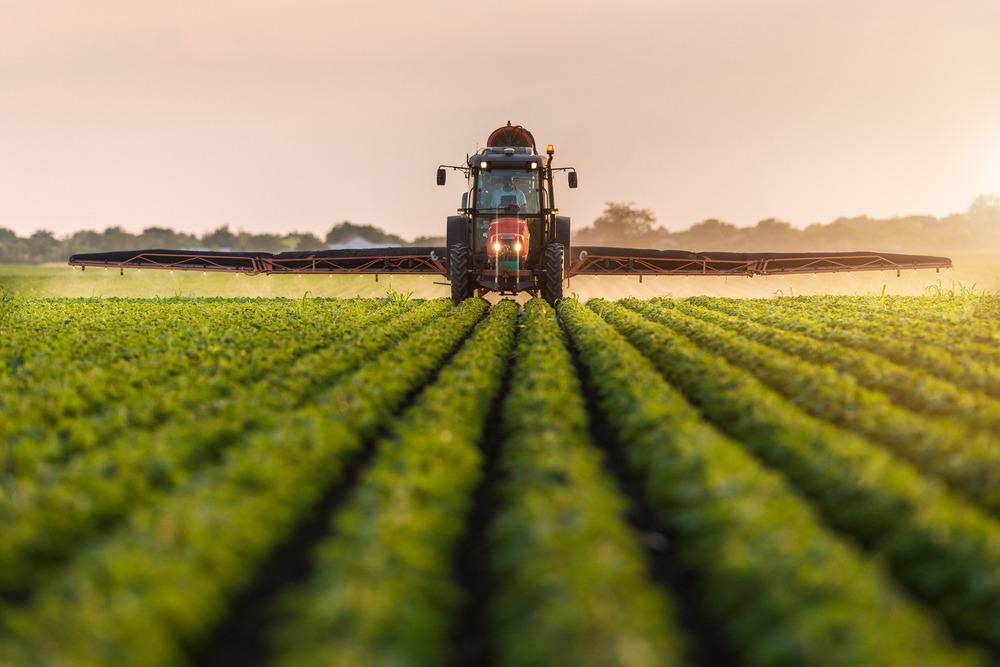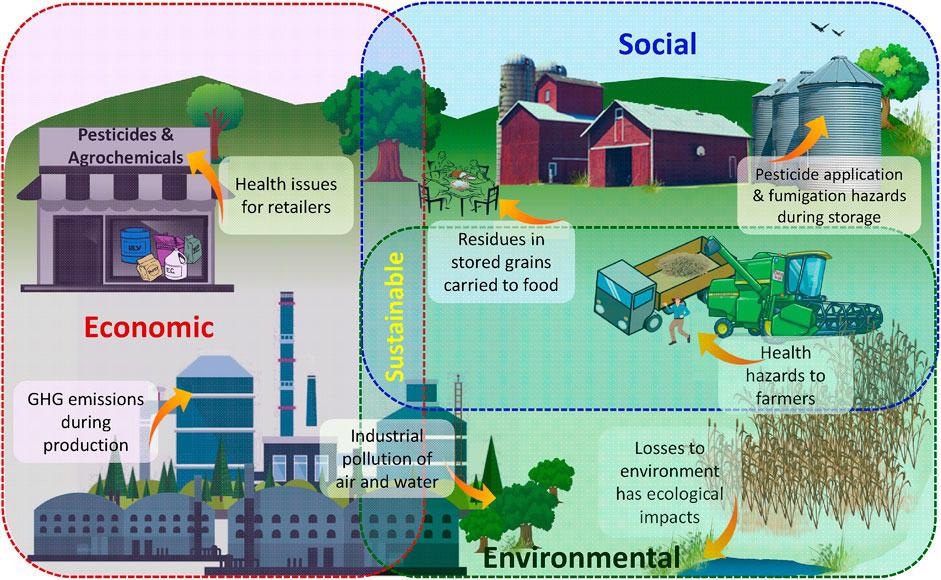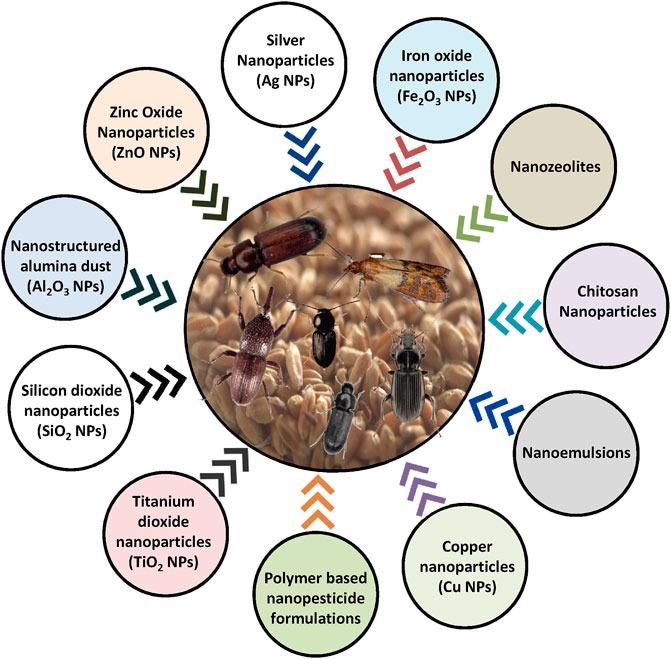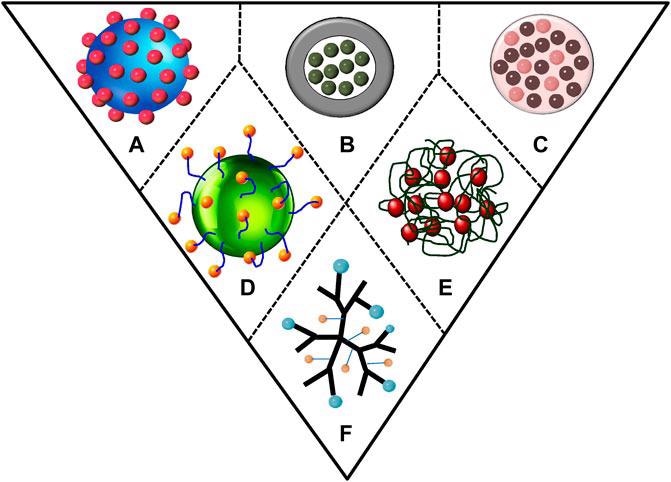Researchers have published an article in frontiers in Nanotechnology focusing on the advantages of nanotechnology for use in agriculture and pesticides.

Study: Nanomaterials for Postharvest Management of Insect Pests: Current State and Future Perspectives. Image Credit: Fotokostic/Shutterstock.com
Crops and Agricultural Losses
Cereals, pulses, and oilseeds are the most extensively cultivated food crops globally. These crops are an important part of our diet because they are high in proteins, complex carbs, lipids, nutrients, mineral deposits, and oils.
Because of the presence of certain nutritional components, the granules of these cereals are susceptible to insect pest infestation during storage. When insect pests feed on grains and render them unfit for human consumption, the market value of grain production suffers, resulting in massive monetary losses.
In severe cases, losses due to pest infection in storage might reach 50 to 60 percent. Postharvest losses can sometimes exceed those suffered by crops in the field.
Direct losses are caused by the direct eating of husks, whereas secondary losses are caused by the creation of netting, exuviae, frass, and bug carcasses, which considerably reduce seed quality and render grains unsuitable for human use.
Variations in the wheat storage system due to insect infestations lead to the production of hot and damp "hotspots," which promote the growth of storing fungus. The development of fungus in stored grain might boost crop losses even more.

Figure 1. Economic, social, and environmental aspects of sustainability of pesticide use in agriculture. © Jasrotia, P. et al., (2022)
What are the Insect Control Options?
There are other bug control viable alternatives, including manual, physical, chemical, and microbiological approaches, but fumigation is the most widely used form of pest management because of its broad application in a variety of storage environments, including sacks, silos, factories, and mills.
However, chemical pesticides are commercially available for the management of storage pests; however, these pesticides are expensive, ineffectual, and detrimental to both the environment and health.
Importance of Aluminium Phosphide (AIP)
Aluminum phosphide (AlP) is the most important fumigant for stored product insect control since it protects the grains and preserved goods the best.
Bulk products can be efficiently guarded against pest infestation by using AIP. The phosphine gas generated by AIP easily permeates grain bulks and immediately removes them from the grains by oxygenation, leaving no leftovers. Furthermore, there are only a few other fumigants accessible, such as methyl bromide and sulfuryl fluoride.
The bulk of stored grain pests is resistant to phosphine and other fertilizers. As a result, pesticide resistance has emerged as a global concern.
Traditional pest control strategies in storing are currently insufficient, and new novel management approaches must be developed.

Figure 2. Types of potential nanomaterials and nanoformulations suggested for insect pest management under storage. © Jasrotia, P. et al., (2022)
Are Nano Pesticides Effective?
Under the current scenario, where agricultural production is confronted with significant issues such as contamination of the environment, resistance to pests, bioavailability, and health risks, nanotechnology is emerging as a highly appealing tool for achieving the goal of reducing the volume of pesticides. Its use is by providing innovative forms for the composition and distribution of pesticide bioactive components, as well as innovative natural compounds, collectively referred to as nano pesticides.
The key advantage of using nano pesticides is that it reduces the number of pesticides used to protect crops and stored products. Nanotechnology is concerned with materials at the nanoscale scale and has been shown to offer a high potential for generating revolutionary pest control solutions.
Applications of Nanoemulsions?
Several nano-emulsions have been investigated for pest management in stored grain. These nano-emulsion compositions, which are target-specific, can increase the efficacy of botanical insecticides for commercial exploitation.
Additives and cleansers can be used to boost the efficacy of these compositions. These are less expensive because they have a high solubility in water and can quickly solubilize lipophilic and hydrophilic molecules.
Furthermore, chemical stability is fairly excellent across a wide temperature range (10–55 °C). Essential oil inorganic compounds have been studied as a pesticide replacement.
Using such formulations can aid in the resolution of issues such as low aqueous solubility, deterioration, and turbulence.

Figure 3. Types of polymer-nanoparticles formulations for delivery of pesticides via (A) adsorption on nanoparticle, (B) encapsulation within polymeric spheres (nanocapsule), (C) entrapment within polymeric nanoparticles (nanosphere), (D) attachment on nanoparticle by different linkers, (E) entrapment within polymeric micelles, and (F) branched and ordered polymeric molecules (dendrimers). © Jasrotia, P. et al., (2022)
Major Concerns and Future Perspectives
Nano pesticides may offer a new challenge due to their longer duration and increased toxicity. A tiny droplet size may also cause nanodroplets to evaporate before reaching their destination.
Another important field of research is the interface of nanocomposites with microbes, vegetation, and other creatures at various trophic levels. There are no regulations governing the licensing and entrance of nanoproducts onto the market.
The future nanoscale study should encourage the development of sophisticated nano-pesticide compositions as well as the creation of ecologically responsible sustainable nano-pesticide chemicals to further boost this department of applications.
Reference
Jasrotia, P. et al., (2022) Nanomaterials for Postharvest Management of Insect Pests: Current State and Future Perspectives. Frontiers in Nanotechnology. 811056. Available at: https://www.frontiersin.org/articles/10.3389/fnano.2021.811056/full
Disclaimer: The views expressed here are those of the author expressed in their private capacity and do not necessarily represent the views of AZoM.com Limited T/A AZoNetwork the owner and operator of this website. This disclaimer forms part of the Terms and conditions of use of this website.